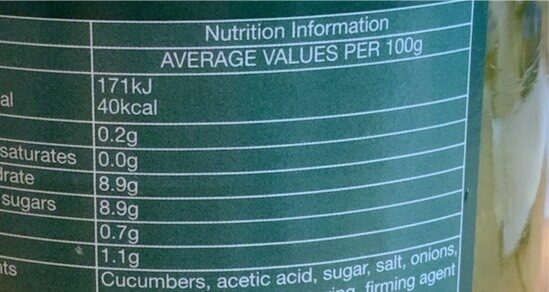Whole sweet cucumbers, pickled - Mrs Elswood - 670g
This product page is not complete. You can help to complete it by editing it and adding more data from the photos we have, or by taking more photos using the app for Android or iPhone/iPad. Thank you!
×
Barcode: 50409334
Quantity: 670g
Packaging: Glass
Brands: Mrs Elswood
Categories: Plant-based foods and beverages, Plant-based foods, Fruits and vegetables based foods, Canned foods, Vegetables based foods, Canned plant-based foods, Pickles, Canned vegetables, Plant-based pickles, Pickled vegetables, Pickled cucumbers, Gherkins, Pickled gherkins
Labels, certifications, awards: Vegetarian, Vegan
Origin of ingredients: Netherlands
Manufacturing or processing places: Netherlands
Stores: Tesco
Countries where sold: United Kingdom
Matching with your preferences
Environment
Packaging
Transportation
Report a problem
Data sources
Product added on by ownhwd
Last edit of product page on by roboto-app.
Product page also edited by kiliweb, openfoodfacts-contributors, packbot, yuka.sY2b0xO6T85zoF3NwEKvlmkZdffwug3GOULtkGi5wtGkdq25cet9zJHUb6s.








